In June, we made a stunning tour of the Var department in the Mediterranean Provence. The main goal was to visit the many commemorative sites of the “Provençal D-Day“. This year marks the 80th anniversary of the Allied forces liberating southern France. But even if you are less interested in history than we are, the southern coast of Provence is a fantastic holiday destination. You will find beautiful landscapes, stunning beaches, picturesque villages, and idyllic vineyards. In addition, you can go on the most beautiful walks there.
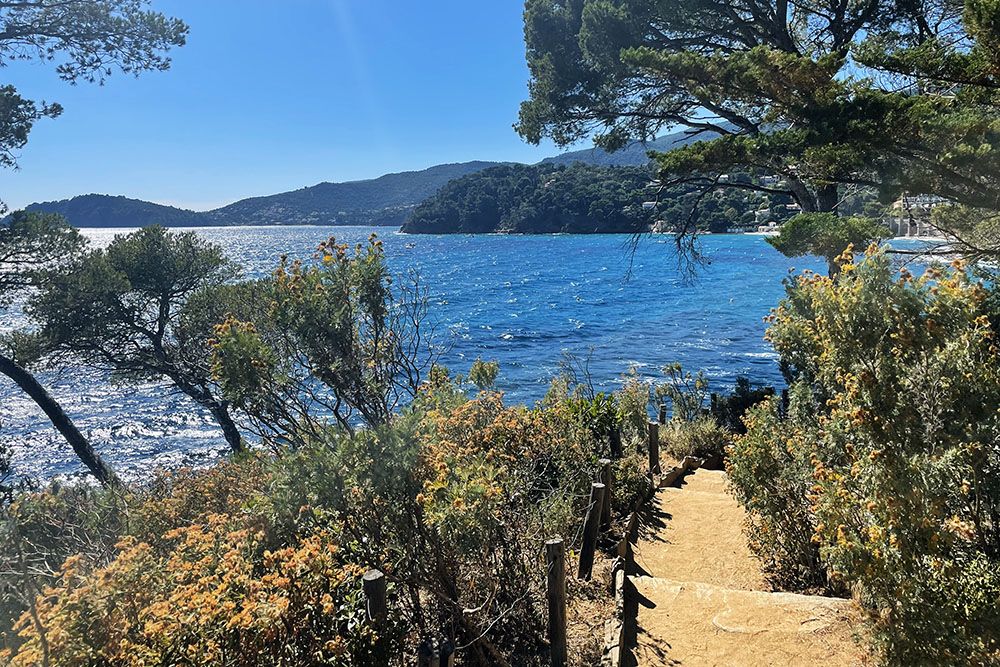
Travel Route Suggestion through the Mediterranean Provence
In this blog, we suggest a fantastic tour through the Var department in the Mediterranean Provence. We describe day by day what we believe you should not miss at all. Allow at least a day for the described destinations.
Day 1 in the Mediterranean Provence – Toulon
We start our tour in Toulon, the capital of the Var department. Toulon, together with Brest, is the main port city for the French navy. While the Mediterranean coast is known for its beautiful beaches and lively beach life, Toulon offers a more relaxed Mediterranean lifestyle.
Highlights of Toulon you shouldn’t miss
Begin this first day with a visit to the museum of the invasion and liberation of Provence. This museum is located on the over 500-meter-high Mont Faron. The view you get here of Toulon and the Mediterranean Sea is simply spectacular! You can get there the fastest by cable car. But if you enjoy hiking, climbing Mont Faron is an absolute recommendation. The well-signposted walk is perfectly doable if you have a good walking condition.
Then have an extensive lunch somewhere in the vicinity of Cour Lafayette, a long car-free shopping street that stretches to the port. Along this charming, cosy street, you will find numerous local products and delicacies. Especially in the morning, when there is a market along the entire length of Cour Lafayette. If strolling along market stalls is your thing, consider taking the cable car to Mont Faron in the afternoon.
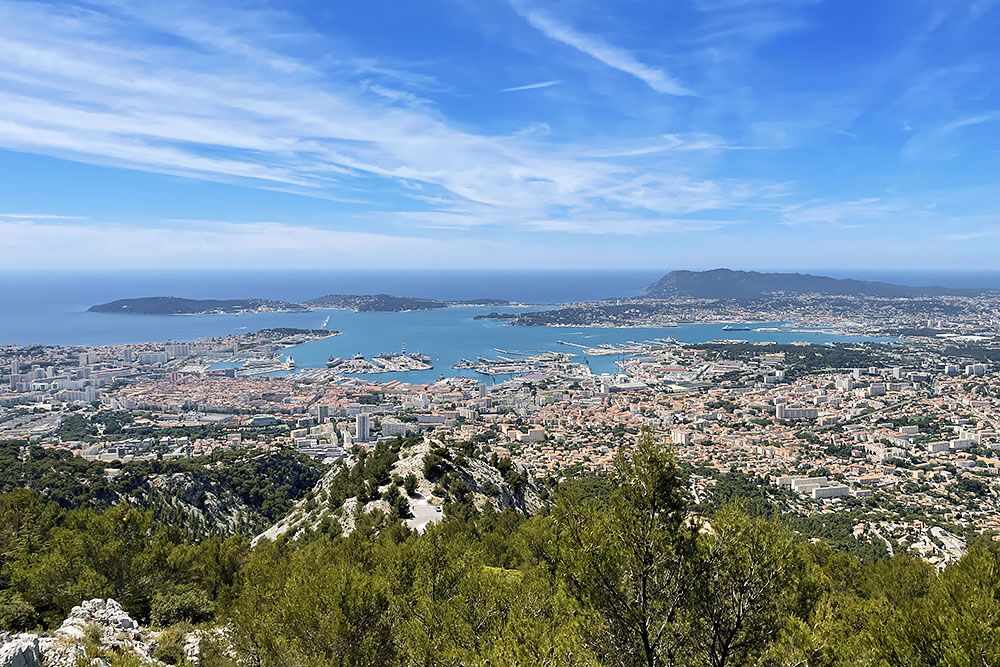
The naval port of Toulon
Walk along Cour Lafayette until you reach the harbour. There is plenty to see and experience in the port of Toulon. You have, among other things, the Maritime Museum. In this particularly interesting museum, you can learn more about the rich maritime history of Toulon. Then stroll along the boulevard where you have a beautiful view of the harbour, the navy’s ships, and sometimes truly stunning luxury yachts. By the way, you will also find many cosy terraces and restaurants along the boulevard.
Definitely take a guided boat trip through the harbour. The naval port of Toulon has been used by the French navy since the 15th century. During the boat trip, you will sail past that naval port where the imposing aircraft carrier Charles de Gaulle is usually anchored. You will also pass the 17th-century Vauban fortifications. The fort is still used by the French army today.
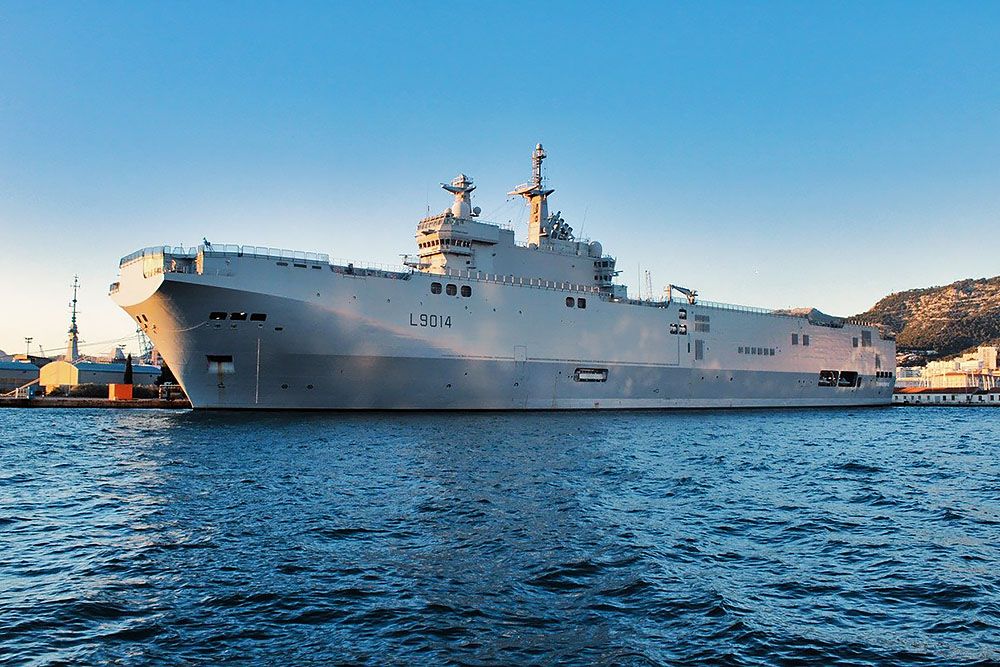
Day 2 in the Mediterranean Provence – Hyères-les-Palmiers
Hyères, the next destination of our tour, is only 20 kilometers from Toulon. You can get there in just half an hour, unless you take the beautiful but longer coastal route. Our advice is to leave Toulon early anyway because in this part of Var, you quickly run out of time.
The old town of Hyères-les-Palmiers
Hyères and its surroundings are particularly known for the beautiful beaches and islands. But don’t miss the historic city centre of the town! The medieval town is indeed the Provence you find on a postcard. Think of narrow streets, old churches and historical buildings, charming ochre-coloured houses with bougainvillea and wooden shutters, and many super cosy terraces.
When in Hyères, definitely visit the Tour des Templiers. This tower from the 12th century is the only remaining reminder of the commandery of the Templars. The chapel was then on the ground floor, the waiting room on the first floor. In 1770, the tower became the town hall. Today, there are exhibitions. In addition, visit Villa Noailles, a beautiful modernist building from the 1920s. In this beautifully located, cubist country house, exhibitions, festivals, and workshops are held all year round.
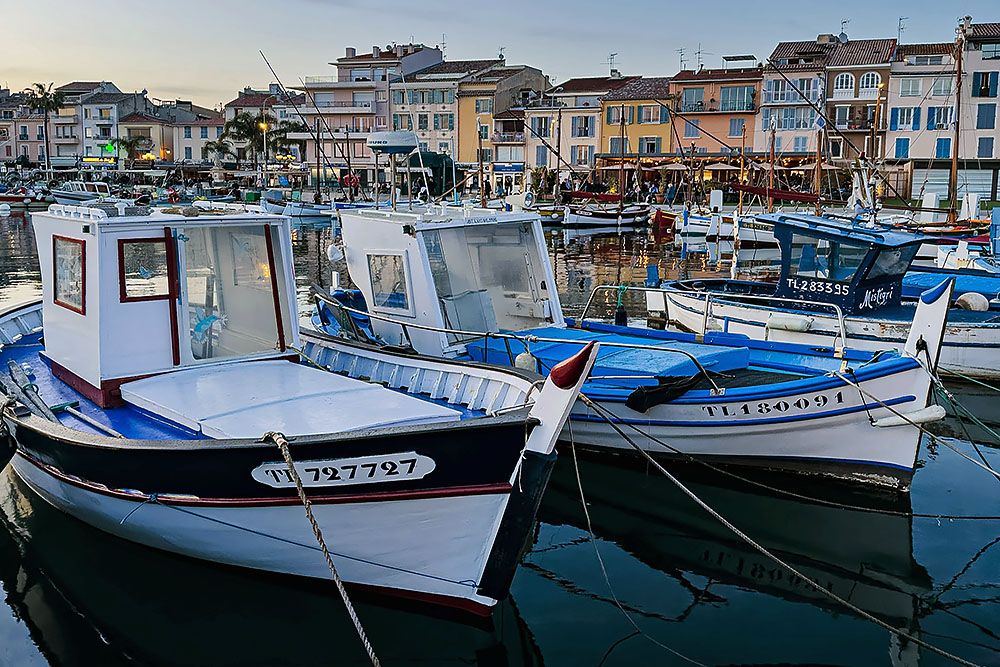
Îles d’Hyères
Ten miles southeast of the Giens peninsula, off Hyères, lie some magnificent islands: Porquerolles, Port-Cros, Île de Bagaud, and Île du Levant. Together, they form the Îles d’Hyères, or the Hyères Islands. Especially the islands of Port-Cros and Porquerolles, which are well worth a short boat trip.
Port-Cros is the smaller of the two islands. It is densely wooded and has two fine beaches. On Port-Cros, you can hike (30 kilometers of hiking trails!), snorkel, visit forts, and simply enjoy beach life. Porquerolles also boasts beautiful beaches, interesting forts, and vineyards including Domaine La Courtade. The island is perfect for snorkeling, diving, and walking (54 kilometers of marked trails). Additionally, you can enjoy lovely bike rides here. There are several bike rental shops at the arrival port. Tip: take a bike to visit the Fondation Carmignac, a large villa with mostly modern art.
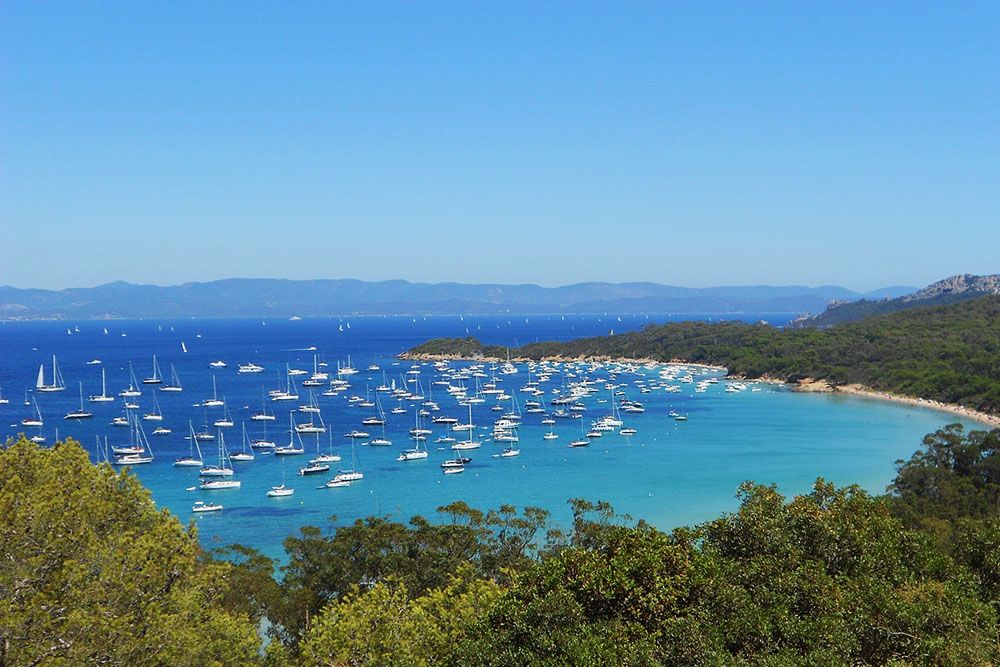
Day 3 in the Mediterranean Provence – Bormes-les-Mimosas
A half-hour drive the next day takes you to Bormes-les-Mimosas. This particularly picturesque, medieval village is known for its many flowers, the castle ruins, the narrow streets with colorful houses, and the church on top of the mountain. During a walk through the village, you’ll keep taking pictures! The village is also known for its lush flora, with more than 700 plant species, including 90 species of mimosa.
What completes a visit to Bormes-les-Mimosas is the immediate surroundings. Here, you’ll find beautiful sandy beaches. Furthermore, Bormes-les-Mimosas offers numerous beautiful cycling and hiking opportunities, with stunning routes along the coast and the inland of the French Riviera. Tip: walk a part of the “Sentier Du Littoral” here, the magnificent coastal route from Saint-Cyr in the west to Saint-Raphaël in the east.
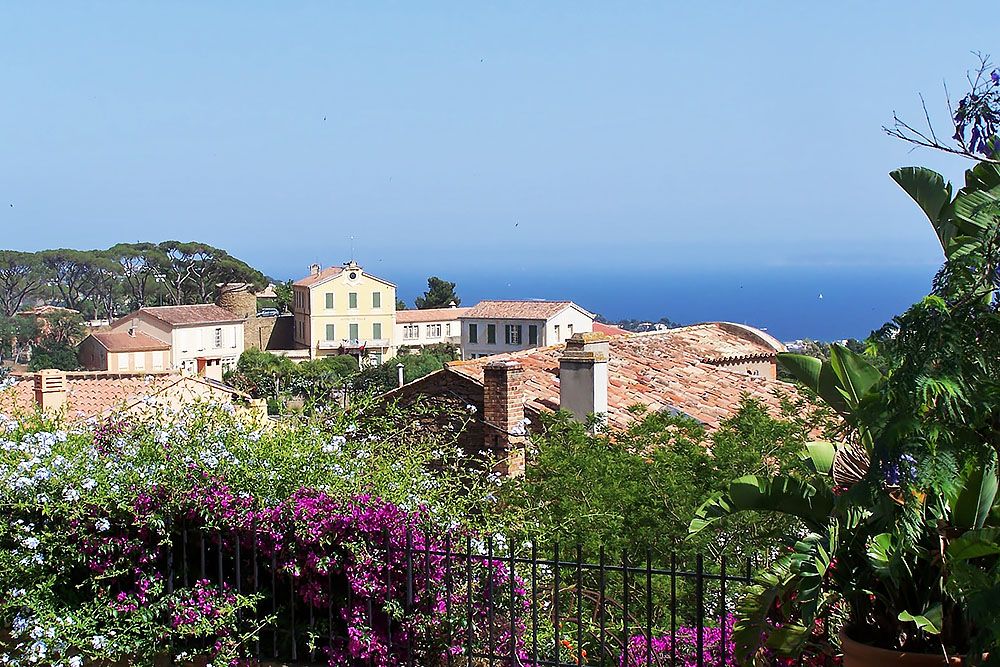
Day 4 in the Mediterranean Provence – Rayol-Canadel, Gassin, and Ramatuelle
On the fourth day of our tour, we visit some of the most beautiful villages in the Var department. But first, we visit the Domaine du Rayol, a beautifully situated botanical garden and arboretum by the sea. The unique garden includes different areas dedicated to plants from the Mediterranean region to Chile and New Zealand. Here, you’ll truly be amazed!
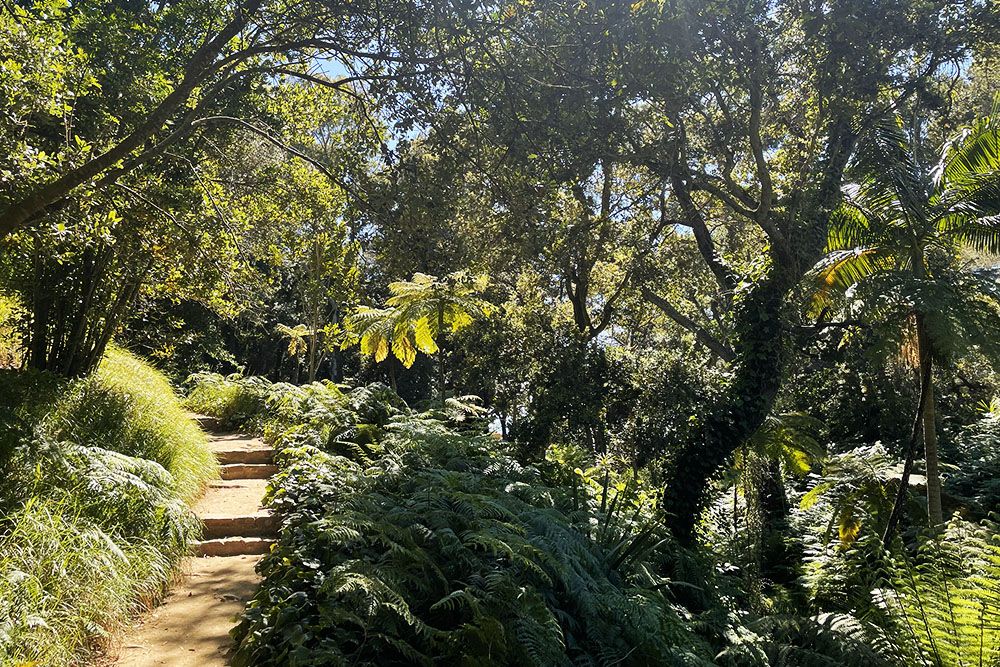
Gassin
From the garden in Rayol-Canadel-sur-Mer, we first drive to La Croix-Valmer. The beach here was one of the landing beaches of Operation Dragoon, D-Day in Provence on August 15, 1944. After this, we drive to Gassin, which is on the list of “les plus beaux villages de France” (the most beautiful villages of France).
Gassin is a picturesque, medieval, and typically Provençal village with charming narrow streets, old houses, and lush Bougainvillea. It’s not very large but should definitely not be missed during the tour. Walk through the village and admire, among other things, the defensive walls, the Romanesque chapel Notre-Dame-de-la-Consolation, and the unique bell tower of the church. Further, enjoy the incredibly beautiful views that you have from the village not only of the sea but also of the Maures mountain range. The two most beautiful viewpoints can be found at Place deï Barri and Montée Saint-Joseph (near the Gassin Tourist Office).
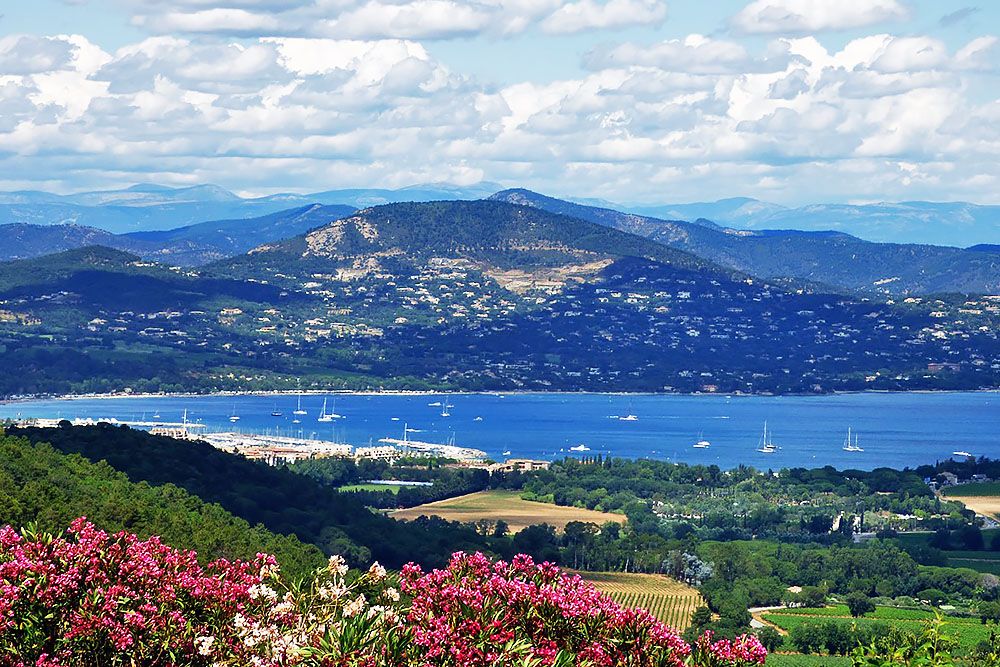
Ramatuelle
From Gassin, we head to today’s final destination: the picturesque village of Ramatuelle, where the television program Villa Felderhof was filmed some time ago. Just like in Gassin, in the idyllic Ramatuelle, you’ll find winding streets, old colorful houses, and wonderfully scented flowers. The village is situated on a hill, surrounded by beautiful nature. Ramatuelle overlooks the coast, the mountains, and the vineyards that slope down to Pampelonne Beach.
In the village, visit the local tourist office and get information about the places you must see. Such as the Saracen gate, the old prison, or the church of Notre-Dame. They can also tell you about any special events being held during that period.
Got some time and energy left? Then visit the nearby, magnificent winery Chateau Volterra. Here, you’ll have a breathtaking view of the Mediterranean Sea and the vineyards of the region. The castle was built in the early 20th century in the elegant style of a Tuscan villa. In addition to vineyards, there are beautiful gardens with lavender hedges, rose gardens, pine trees, and olive trees.
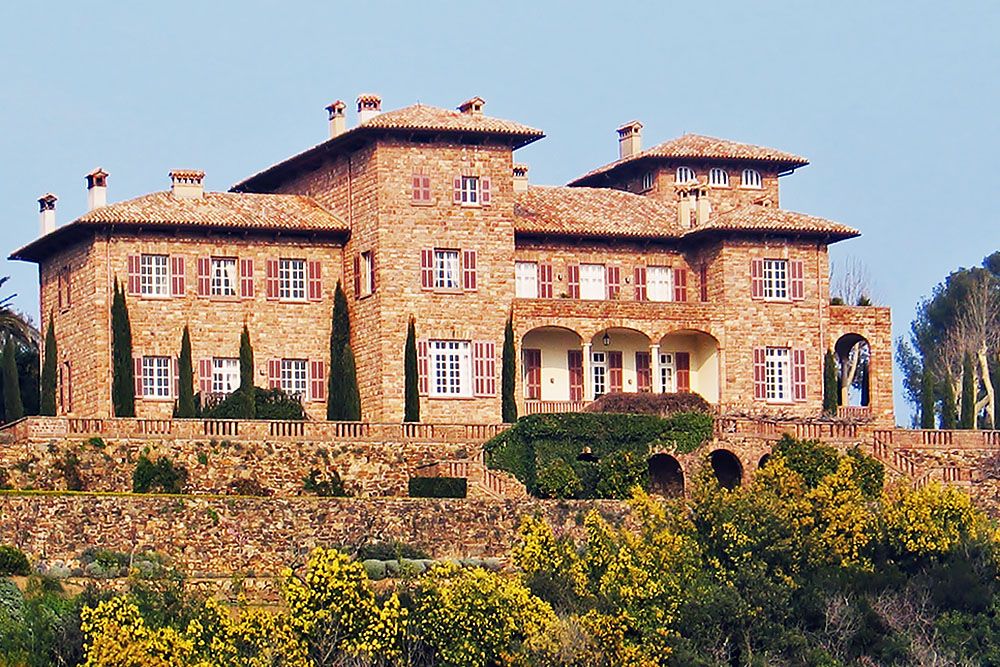
Day 5 in the Mediterranean Provence – Grimaud and Saint-Tropez
On the fifth day of our tour, we visit the village of Grimaud before ending the day in Saint-Tropez. Grimaud is especially known for its marina, Port-Grimaud. But first, we visit the historic village, which is only a few kilometers from the coast.
Grimaud is the typical Provençal village to fall in love with at first sight. Just like in Gassin and Ramatuelle, you’ll find cobbled winding streets and beautiful, old houses with bougainvillea here. In addition, in Grimaud, you have the ruins of an old 14th-century castle. Just the walk there alone will charm you. Plan enough time for the visit to the medieval village!
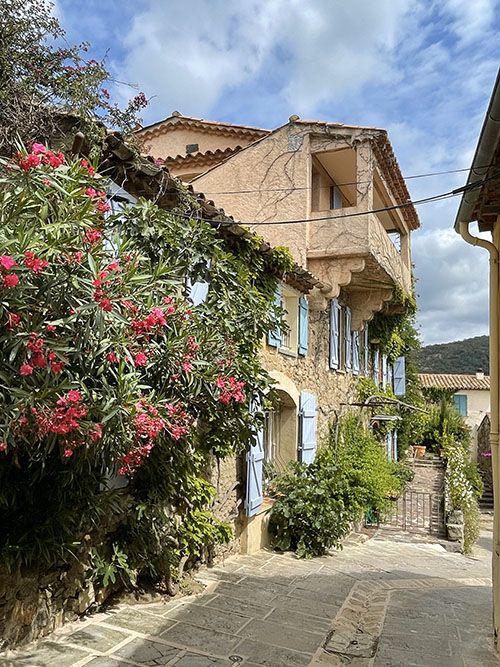
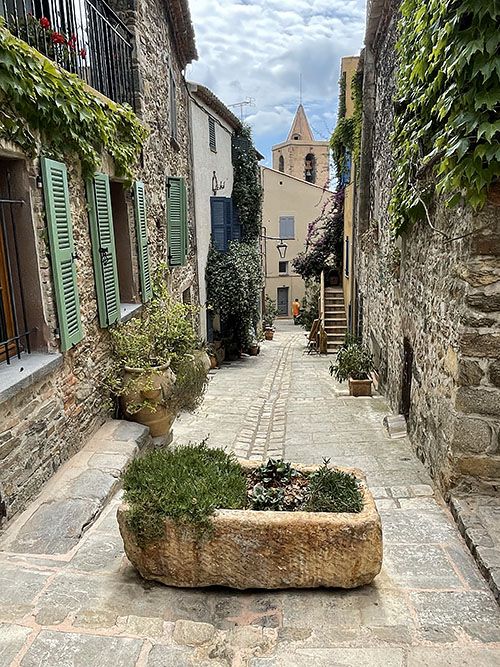
Port Grimaud
Port Grimaud is a city that was completely built on water in the 1960s. For that reason, the city is also called the Venice of the French Riviera. You’ll find rows of houses built on artificial islands and peninsulas, each with access to the water and its own mini marina. Admittedly, Port Grimaud is a bit kitschy and a bit too touristy. However, it’s fun to explore the city by navigating the canals with an eco boat.
Saint-Tropez
The iconic seaside resort of Saint-Tropez was formerly a modest harbor town. It was the first city on the coast to be liberated on August 15, 1944, as part of Operation Dragoon. After the war, it became an internationally renowned seaside resort, especially known for the influx of artists, writers, and celebrities. The city attracted the attention of the international jet set and became a symbol of luxury and glamour.
Today, Saint-Tropez is known for its beaches, bustling marina, and vibrant culture. Although the city, in our opinion, is a bit over the top, a visit is a must during your tour. Saint-Tropez has retained quite a bit of its historical heritage. Take a city walk to get to know the city well. And definitely visit the Musée de la Gendarmerie et du Cinema. This unique museum highlights both the history of the police in Saint-Tropez and the cinematic legacy of the city, with exhibitions about famous films shot here.
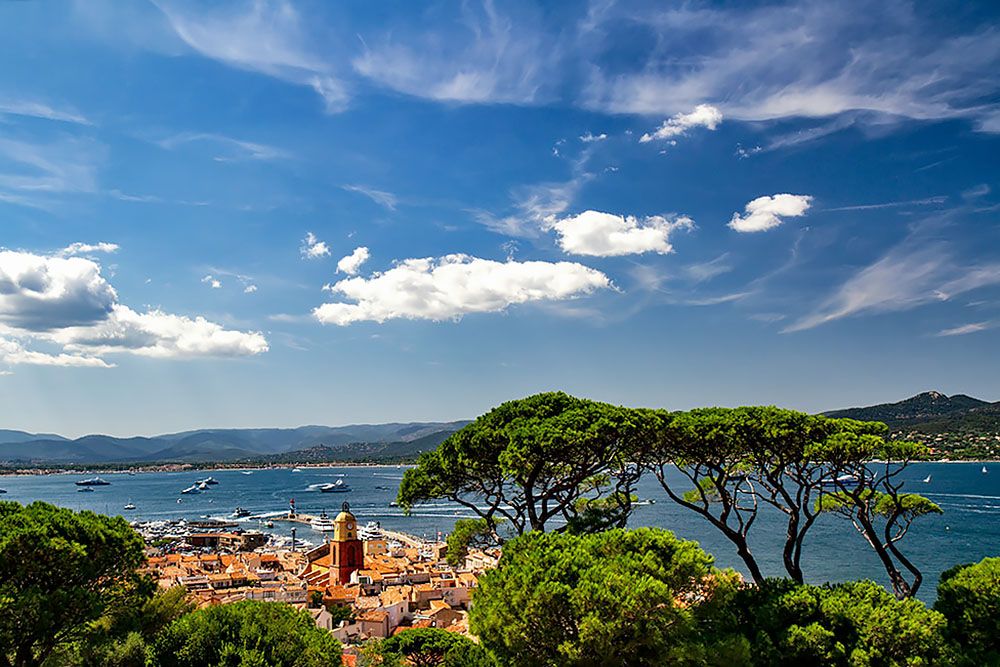
Day 6 in the Mediterranean Provence – Fréjus
Today, we drive from Saint-Tropez along the coast towards Fréjus. Along the way, we pass Sainte-Maxime. The village grew from a fishing village to a thriving community over more than a thousand years. In the 20th century, it attracted artists, poets, and writers because of the climate, the beautiful surroundings, and the azure blue water.
During the Second World War, Sainte-Maxime played an important role in the invasion and liberation of southern France. At the wonderfully peaceful Nartelle beach, you’ll find an old battery and many interesting information panels that commemorate that period.
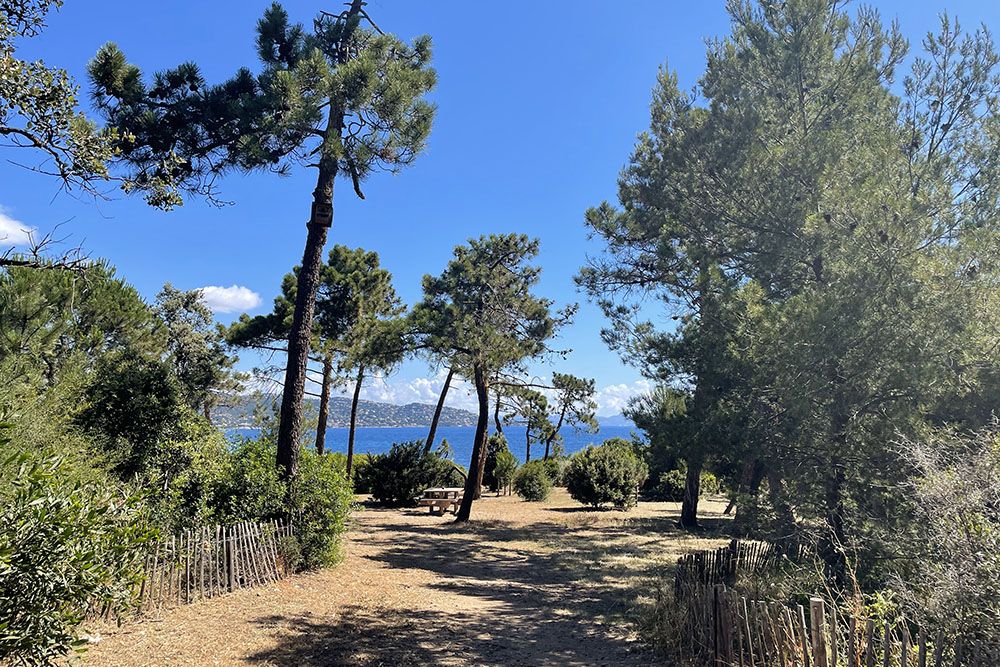
Fréjus
The final destination of today is the ancient city of Fréjus, from well before the arrival of the Romans. The city was strategically located at the intersection of important roads during Roman times. This made Fréjus a prosperous city with one of the most important military harbors of the Roman Empire. You can still find many well-preserved monuments from that period. Such as an amphitheater, an aqueduct, a lighthouse, remnants of city walls, and baths.
After the fall of the Roman Empire, the city declined but recovered and became an important episcopal city. The cathedral, the monastery, and the episcopal palace (now the town hall) still bear witness to that time. By the way, the baptistery of the cathedral dates back to the late 4th century. It is the oldest Christian landmark in Provence and one of the oldest in all of France.
Upon arrival in Fréjus, go to the tourist office in the city. They can help you with a good city walk along the most special sights. After the city walk, end the day at one of the numerous cozy terraces and restaurants. You’ll find them both in the center and at the marina.
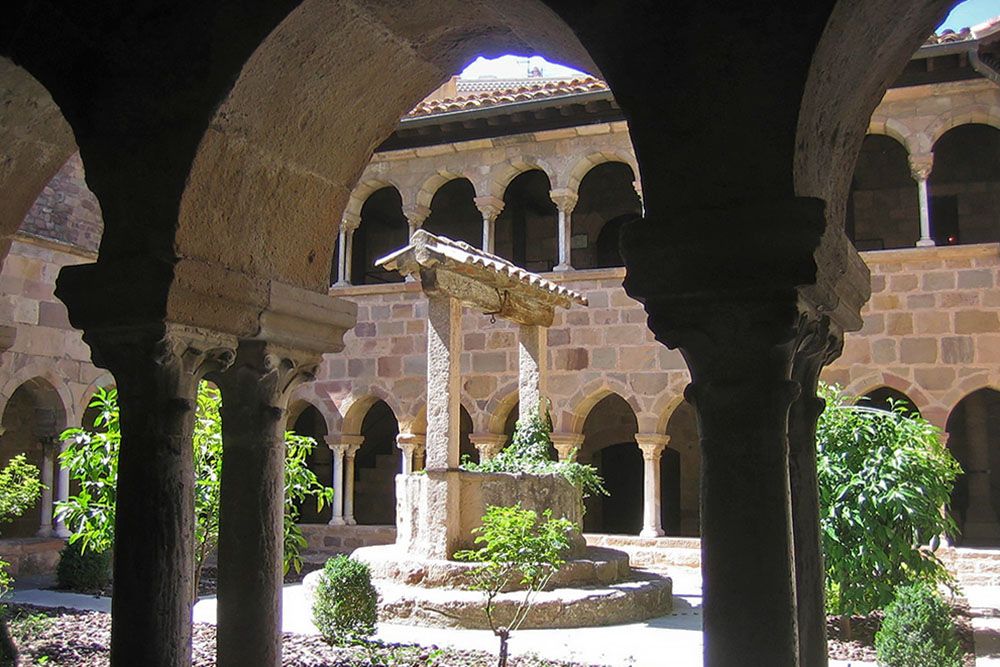
Day 7 in the Mediterranean Provence – Saint-Raphaël and Surroundings
The last day of the tour is spent in Saint-Raphaël and its inland. If today promises to be a warm day, we start with exploring the inland. Here, we go hiking.
Hiking in the Esterel Mountains
In the immediate surroundings of Fréjus and Saint-Raphaël lies the Esterel Mountains. The mountain range has a tumultuous geological history dating back over 250 million years. Almost half of the area is designated as a “Natura 2000” zone due to the exceptional fauna and flora it harbours. This exceptionally beautiful natural area offers numerous outdoor opportunities, including several stunning hiking trails of varying difficulty levels.
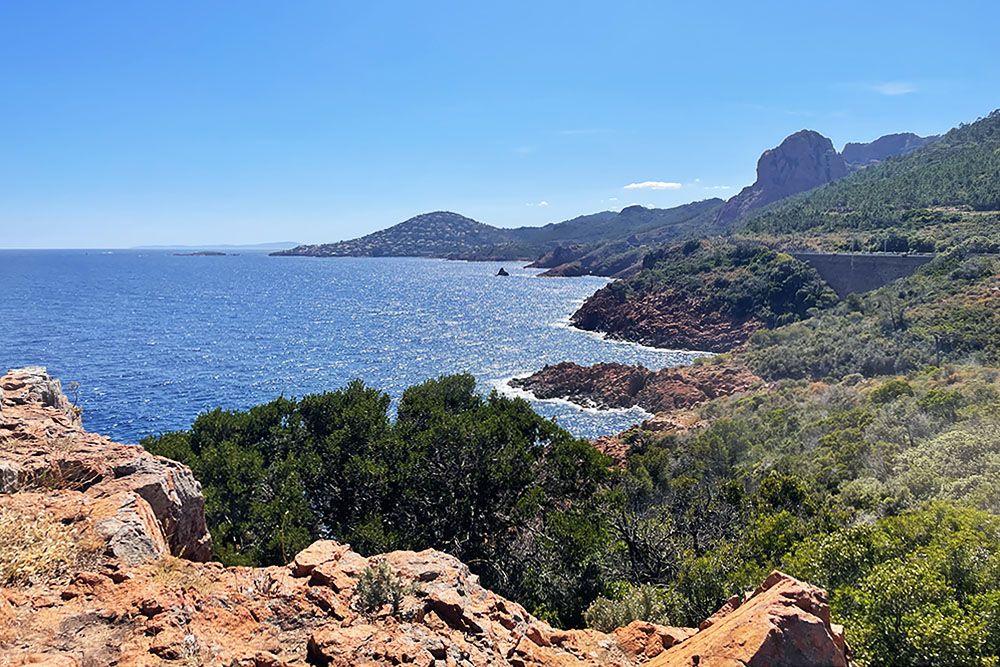
Saint-Raphaël
We have come to the end of an active tour where we have seen and done a lot. It’s time to relax a bit. This can be done excellently at one of the many beautiful sandy beaches. Or at the marina and the lively center where you’ll find numerous super cozy terraces, restaurants, and cafes.
Got some energy left? Although Saint-Raphaël has fewer historical sights than the adjacent Fréjus, there’s still plenty to see in the city. Strolling through the narrow streets of the old town, you’ll naturally pass by the Archaeological Museum, the San Rafeu Tower, and the Neobyzantine Basilica of Our Lady. And did you, like us, enjoy the films of Louis de Funès? Then the Louis de Funès Museum is a museum you shouldn’t miss!

Route Overview Map
Practical Tips for a Tour of the Mediterranean Provence
The Var department is located in the southeast of France, in the Provence-Alpes-Côte d'Azur region. It is bounded by the Mediterranean Sea to the south and borders the departments of Alpes-Maritimes, Alpes-de-Haute-Provence, Vaucluse, and Bouches-du-Rhône. The capital of the Var department is Toulon.
There are several ways to travel to Toulon, the starting point of our tour. One of the fastest ways is by train. You can travel via Paris with the high-speed train to Marseille. In Marseille, you then take the train or a rental car to Toulon. Another option is by plane. You can fly non-stop to Marseille (or Nice) from various airports. From the airport, take a rental car. Of course, you can also drive to Toulon with your own car.
The most ideal way to make the tour described in this blog is with a (rental) car. In addition, the regional bus service ZOU is an option. The bus service connects not only the larger villages and towns in the region but also the smaller villages like Gassin, Grimaud Village, and Ramatuelle. Furthermore, the "Bateaux Verts" (green boats) are a suitable means of transport between some seaside resorts. The coastal roads are usually quite busy, resulting in a lot of traffic jams. This is especially the case in the high season.
The best season for a tour of the Mediterranean Provence is spring to early summer, or in early autumn. During these periods, you'll have pleasant temperatures. Moreover, the coastal towns and beaches are less crowded (and less expensive) than in the high season.
In the Var department in the Mediterranean Provence, you'll find a wide range of accommodation, ranging from bed & breakfasts, campsites, and hotels to apartments and complete villas. Keep in mind that the prices are (much) higher in the high season, especially in the major seaside resorts. If you're traveling by (rental) car, look for accommodations with private parking facilities. This is especially important in the coastal cities.
In the list below, you'll find links to accommodations along the route in the order of the tour:
This tour of the Mediterranean Provence is based on the unique historical tour of many commemorative sites of Operation Dragoon that we made at the invitation of Atout France and the tourism offices of Provence Méditerranée, Var department, Golfe de Saint-Tropez, Sainte-Maxime, Saint-Raphaël, Estérel Côte d’Azur, and Dracénie Provence Verdon.


